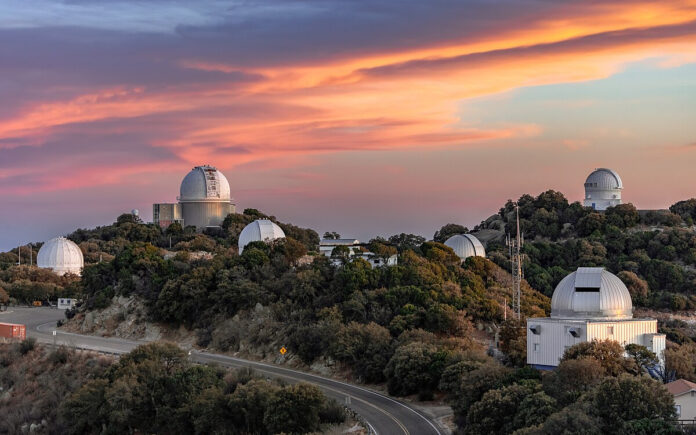Washington: Scientists involved in an international collaboration have provided the most precise test to date of how gravity behaves on an extremely large scale, confirming that it aligns with Albert Einstein’s predictions in his 1915 theory of general relativity. These findings, released on Tuesday, are part of an ongoing study examining the evolution of the cosmos, with a focus on dark energy, the mysterious force driving the universe’s accelerating expansion.
The team used data gathered over a year by the Dark Energy Spectroscopic Instrument (DESI) at Kitt Peak National Observatory in Arizona. This instrument captures light from 5,000 galaxies simultaneously, providing unparalleled insight into the growth of the universe’s structure over the past 11 billion years.
Gravity, one of the fundamental forces of nature, plays a key role in shaping the universe. Einstein’s theory of general relativity explains that massive objects warp space-time, influencing the motion of everything nearby. Although the discovery of the universe’s accelerating expansion in 1998 led some to question whether general relativity needed modification, the new DESI findings confirm that gravity behaves exactly as Einstein predicted.
“Einstein’s theory of general relativity describes the motion of massive objects in a gravitational field that they create. It is one of the most successful physical theories that we have,” said Dragan Huterer, a cosmologist at the University of Michigan and co-leader of the DESI working group. “The discovery of the accelerating universe, however, led to suggestions that maybe general relativity needs to be modified.”
The latest research examined the growth of the universe’s cosmic structure, dating back to a time when the universe was only 20% of its current age. Scientists have long known that the universe is not a random scatter of galaxies, but rather forms a vast cosmic web, with matter drawn together by gravity into filaments and walls, leaving immense voids in between.
The team’s analysis involved nearly 6 million galaxies and their luminous cores, offering an unprecedented view of the universe’s large-scale structure over the past 11 billion years.
Earlier in April, DESI researchers revealed the largest 3D map of the cosmos, indicating that dark energy may not be a fixed force, but rather something dynamic and evolving over time. While their new findings also support Einstein’s theory of gravity, they suggest that dark energy is weakening, a concept that could fundamentally alter the future expansion of the universe.
“Our DESI data shows that it is in agreement with Einstein’s theory of gravity but still favors a dynamical dark energy — and finding these simultaneously is new,” said astrophysicist Mustapha Ishak-Boushaki from the University of Texas at Dallas, co-leader of the working group. “Dark energy seems to be dynamical and weakening. That changes the future of the evolution of the universe, which does not need to be accelerating forever in its expansion.”
Also Read | Nearly 1 Million UK Workers Uncounted, Think Tank Claims
The universe is made up of ordinary matter, dark matter, and dark energy. While ordinary matter constitutes the stars, planets, and visible matter in the universe, dark matter, which is invisible, makes up approximately 27% of the cosmos. The remaining 68% is attributed to dark energy, the cause behind the accelerated expansion of the universe.
“The physical nature of dark energy is at present unknown,” Huterer said. “But its role in driving the universe’s expansion is undeniable.”
Also Read | Doctors Without Borders Suspends Operations in Haiti’s Capital Amid Rising Violence
These new findings further support the current standard model of cosmology, which includes general relativity as a key component. Verifying whether this model accurately reflects the nature of the universe remains at the forefront of cosmological research.
The DESI collaboration involves over 900 researchers from more than 70 institutions worldwide, managed by the U.S. Department of Energy’s Lawrence Berkeley National Laboratory. The research was published on the arXiv online repository, ahead of peer review.



